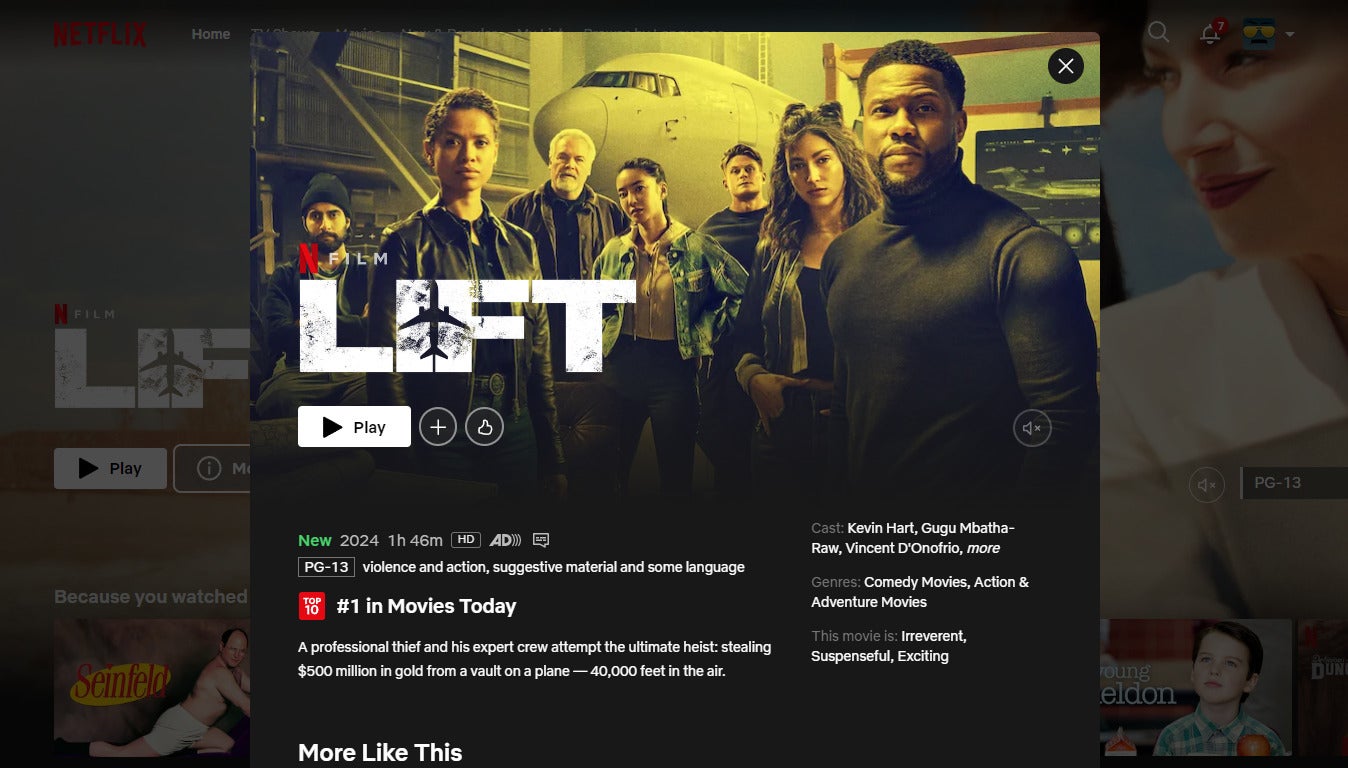How Those One-Word Tags Like ‘Feel-Good,’ ‘Witty,’ and ‘Suspenseful’ Boost Netflix Engagement
A few defining tags that describe what a show or movie is about have been crucial for boosting engagement on Netflix, as other streamers continue to struggle with engagement.

The one-word tags Netflix uses to describe its movies are an undoubted boon to users. These tags give users a glimpse at the show or movie they’re considering watching without having to watch a trailer or read a review, and a new report from The New York Times details how the tags are applied, and why they’re so important to the world’s largest streamer.
- A group of around 30 Netflix employees are responsible for creating the tags used to quickly describe titles.
- Users see different tags for shows and movies based on their own viewing history.
- The story goes to show how Netflix is beating competing streamers like Max and Prime Video in terms of browsing and user experience.
Tag, You’re It!

Netflix tags each show or movie in its library with three one-word descriptors that allow the user to see at a glance what vibe that particular title will give. The three tags are pulled from a larger group of words assigned to that title by a group of around 30 taggers, and the three words shown to the viewer are based off their particular watching history on the platform. The tags themselves are found in the poster tile, under the section that shows which genre the movie falls into.
The purpose behind the tags is to make it easier for viewers to discover something new to watch. Each streaming service struggles with content discovery; the average streaming audience member spends more than 10 minutes finding something new to watch, and that can be an eternity for streaming platforms that are trying to keep customer engagement high.
“On average, if you haven’t gotten someone to hit play within 53 seconds, the likelihood goes down precipitously” that the person will choose any titles on that service, Netflix’s chief product officer told the New York Times.
Related: The Complete List of Netflix Category Codes (Over 3,000) ►
Netflix has done plenty of experimenting with content discovery mechanisms. It decided to sunset the “Surprise Me” button that showed the viewer a random title based on past viewing history in February, but when the streaming platform has removed its tags in the past, it has seen marked drops in engagement.
“People would take much longer to choose,” Netflix product director Allan Donald told the paper of record. “They would drop out of a title because they didn’t like it too much or because they didn’t know what they were getting.”
How Does Netflix’s User Experience Compare to Competition?

Netflix’s brief, descriptive tags attached to every title make up a larger user experience tapestry that shows in part why it’s the world’s largest streaming service. A survey released last summer shows that Netflix gets the most consistent high marks for its user interface, which is a key factor in keeping customers engaged and leading them to new shows.
For example, Netflix’s tags are also used to help populate rows of tiles on the streamer’s homepage. It helps narrow categories to selections like “Critically Acclaimed TV Dramas,” which is then filled with shows like “Suits” and “Grey's Anatomy” that are already enormous brands in their own right. Thus, Netflix uses simplicity to show its audiences titles they’d be likely to watch anyway, and puts them front-and-center using short words and phrases to explain why it’s the perfect show for that viewer.
Contrast that to a streamer like Max, whose content rows are much clumsier and seemingly just based on whatever content Warner Bros. Discovery wants you to watch instead of feeling specially curated for the user. It’s the same with Prime Video, which uses even more rudimentary content rows with descriptors like “Documentaries” or “Drama Movies” that are sometimes highly subjective and seemingly populated with random titles.
A good user experience is just part of the reason that Netflix has more subscribers and makes substantially more profit than any other streaming platform. But it’s a highly important facet of the platform, and though its system of tagging movies seems both simple and inconsequential, the company says it’s an invaluable way to lead subscribers to new titles.
